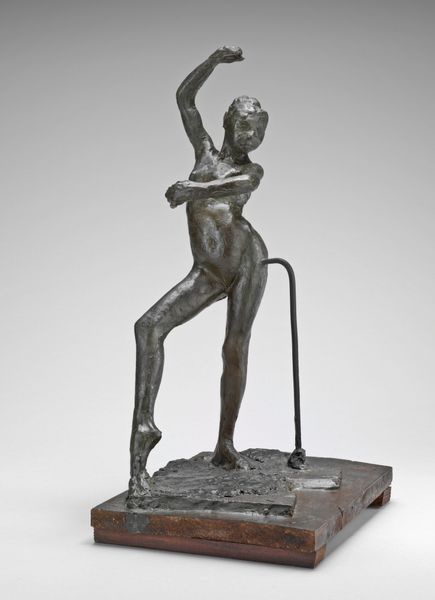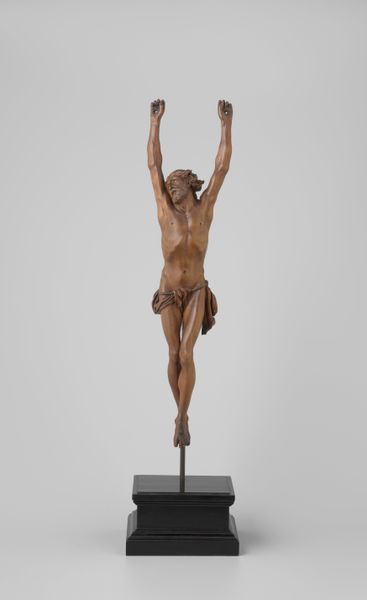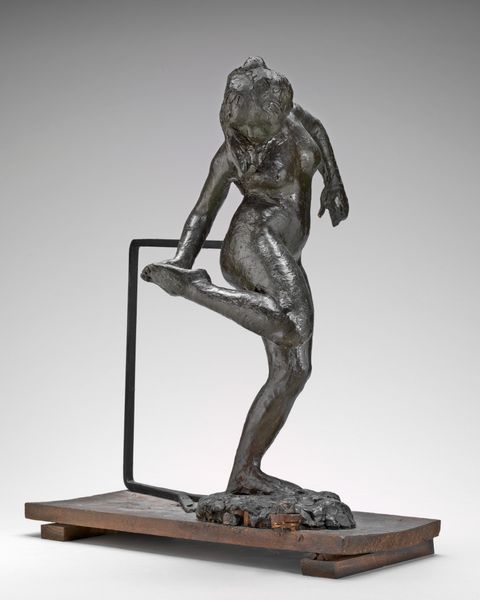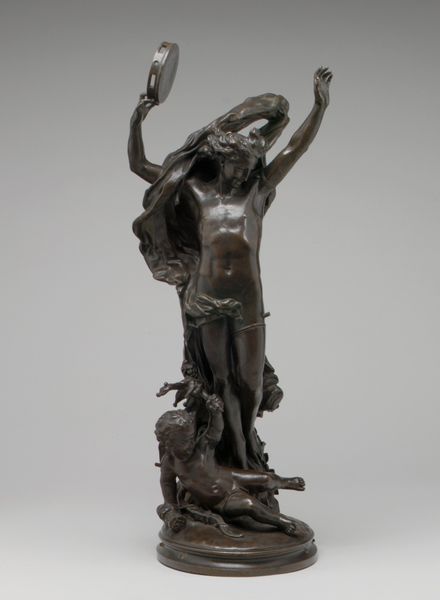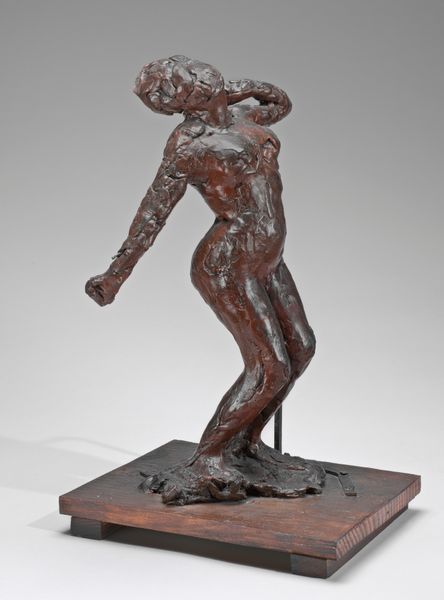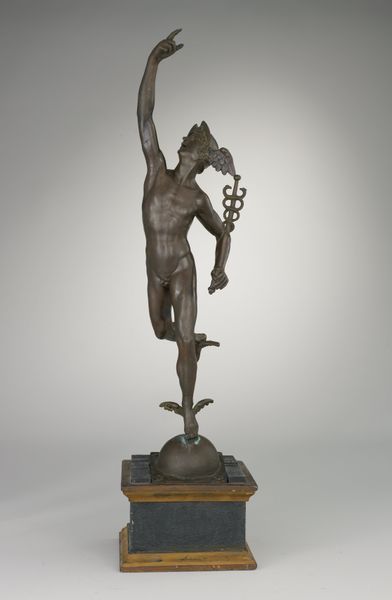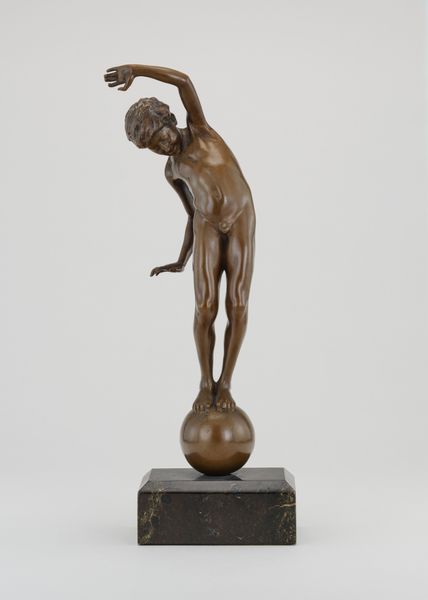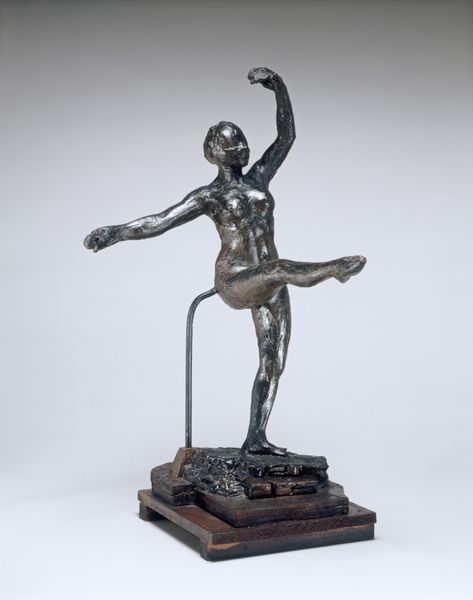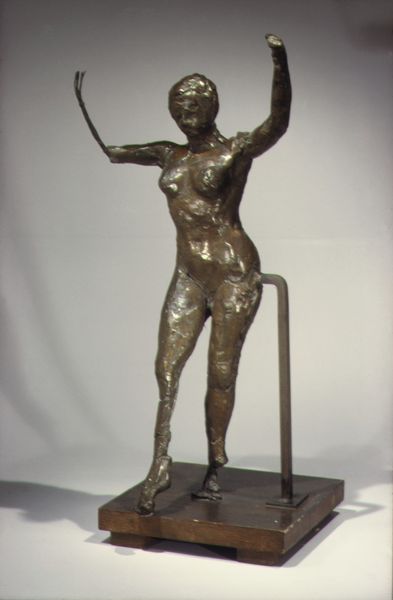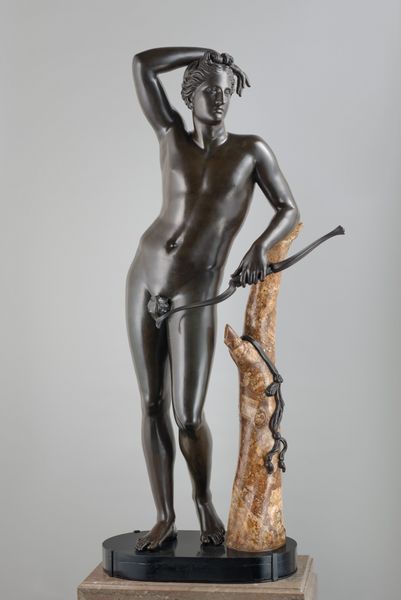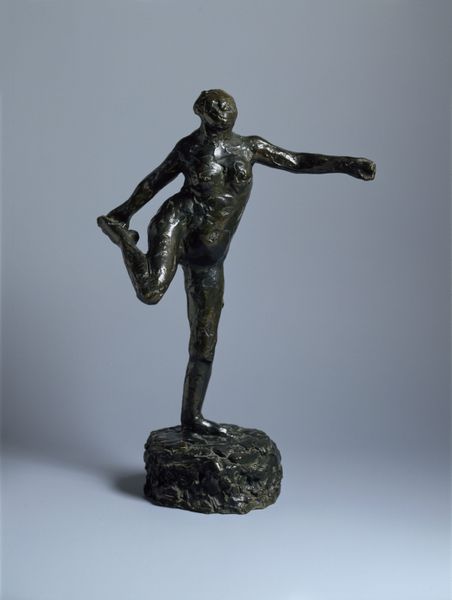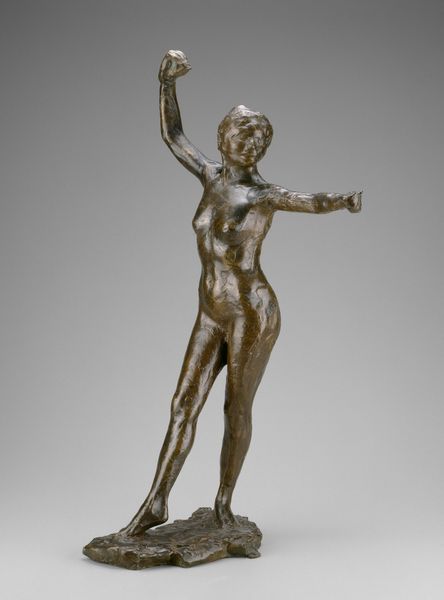
bronze, sculpture
#
impressionism
#
sculpture
#
bronze
#
figuration
#
sculpture
#
nude
Dimensions: overall without base: 35.9 x 15.8 x 16.7 cm (14 1/8 x 6 1/4 x 6 9/16 in.) height (of figure): 35 cm (13 3/4 in.)
Copyright: National Gallery of Art: CC0 1.0
Curator: Let’s delve into Degas' "Dancer Moving Forward, Arms Raised," a bronze sculpture created circa 1885-1890. Degas was deeply interested in the physique and form of dancers, offering glimpses into the Paris Opera Ballet. Editor: Right, my initial impression is the raw energy of her pose. The texture, you can practically feel the exertion, the stretch of muscle. And there's a certain precariousness, a held breath. Is she landing a jump? Pausing to catch her balance? Curator: I find it interesting that Degas explores movement and performance but simultaneously situates dancers as workers. Art historian Griselda Pollock analyzed Degas's work within the male gaze and how it represented female dancers in late 19th century Paris. Editor: I feel a flicker of that tension you mentioned. It makes me question my own gaze here. I see the power and grace but know that historically the ballerina has not always owned the representation of her art or body. What I still love, despite the layers of socio-historical baggage, is how Degas defies typical idealized forms. She is muscular, almost angular in places, and palpably human. Curator: The bronze material also adds complexity. There’s a dialogue here, I think, between its enduring quality and the ephemeral nature of dance. Do you agree? Editor: Definitely. It's like freezing a moment, isn’t it? I imagine it would change in different lighting and invite the viewer to approach from various perspectives, circling around it to appreciate every sinew and angle. The bronze gives this fluidity, almost like time itself is suspended. Curator: The base, too, grounds the figure, literally and figuratively. Editor: Hmm, yes! The base isn't some elegant pedestal. It's rough, almost like a stage hastily assembled. That connects it with the themes of labor you raised earlier. So interesting how context can shift your perspective so much, eh? Curator: Absolutely. And it also challenges this notion of dance as pure artifice. It places dance within material and economic realities that continue to resonate today. Editor: Seeing this through a historical lens has deepened my perception so much! Thanks for lending some context to my own viewing. Curator: Likewise. Situating works within larger cultural and political frameworks only enhances our ability to understand what artworks might communicate to broader audiences today.
Comments
No comments
Be the first to comment and join the conversation on the ultimate creative platform.
